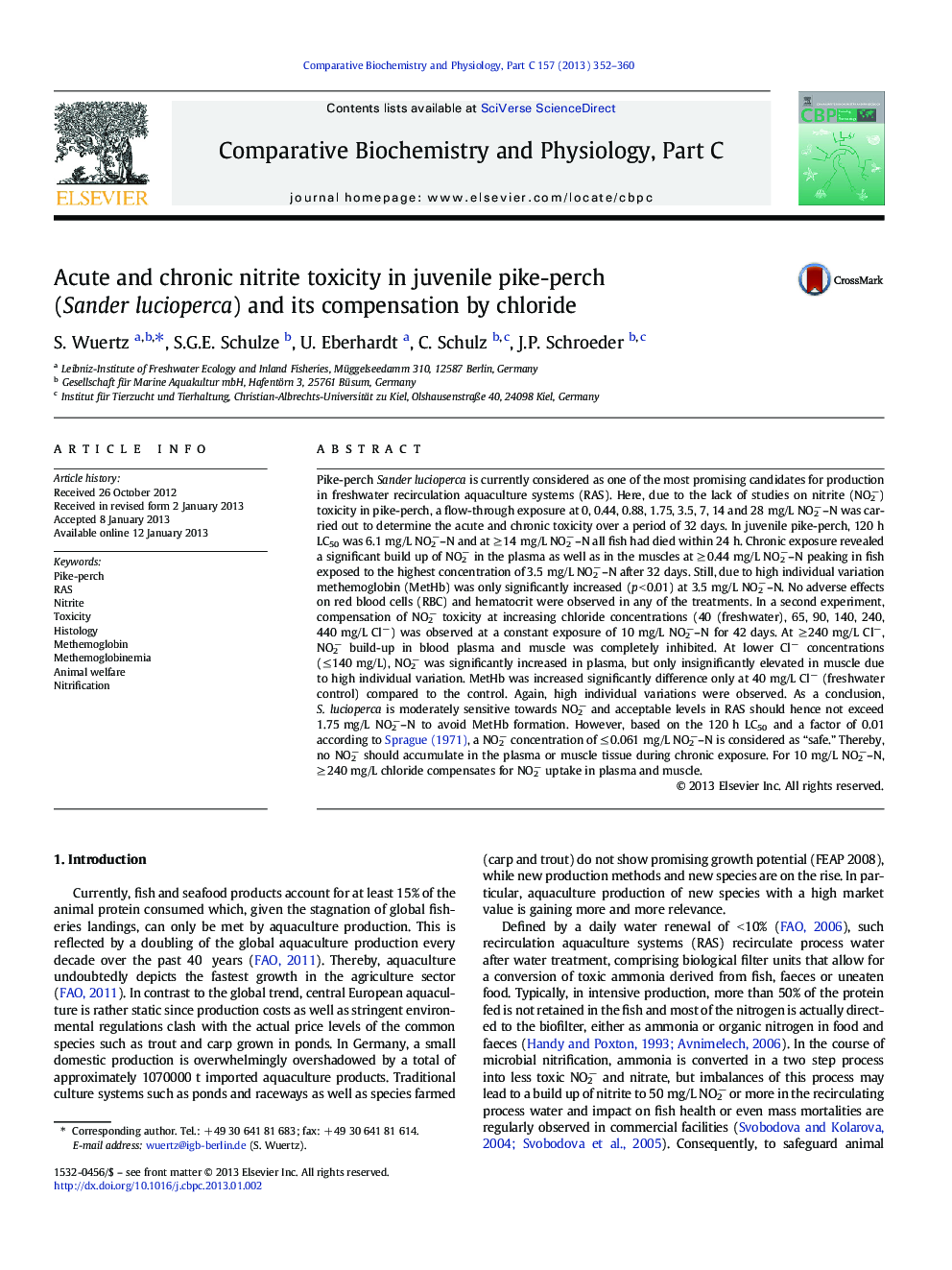| Article ID | Journal | Published Year | Pages | File Type |
|---|---|---|---|---|
| 1977343 | Comparative Biochemistry and Physiology Part C: Toxicology & Pharmacology | 2013 | 9 Pages |
Abstract
Pike-perch Sander lucioperca is currently considered as one of the most promising candidates for production in freshwater recirculation aquaculture systems (RAS). Here, due to the lack of studies on nitrite (NO2â) toxicity in pike-perch, a flow-through exposure at 0, 0.44, 0.88, 1.75, 3.5, 7, 14 and 28 mg/L NO2â-N was carried out to determine the acute and chronic toxicity over a period of 32 days. In juvenile pike-perch, 120 h LC50 was 6.1 mg/L NO2â-N and at â¥Â 14 mg/L NO2â-N all fish had died within 24 h. Chronic exposure revealed a significant build up of NO2â in the plasma as well as in the muscles at â¥Â 0.44 mg/L NO2â-N peaking in fish exposed to the highest concentration of 3.5 mg/L NO2â-N after 32 days. Still, due to high individual variation methemoglobin (MetHb) was only significantly increased (p < 0.01) at 3.5 mg/L NO2â-N. No adverse effects on red blood cells (RBC) and hematocrit were observed in any of the treatments. In a second experiment, compensation of NO2â toxicity at increasing chloride concentrations (40 (freshwater), 65, 90, 140, 240, 440 mg/L Clâ) was observed at a constant exposure of 10 mg/L NO2â-N for 42 days. At â¥Â 240 mg/L Clâ, NO2â build-up in blood plasma and muscle was completely inhibited. At lower Clâ concentrations (â¤Â 140 mg/L), NO2â was significantly increased in plasma, but only insignificantly elevated in muscle due to high individual variation. MetHb was increased significantly difference only at 40 mg/L Clâ (freshwater control) compared to the control. Again, high individual variations were observed. As a conclusion, S. lucioperca is moderately sensitive towards NO2â and acceptable levels in RAS should hence not exceed 1.75 mg/L NO2â-N to avoid MetHb formation. However, based on the 120 h LC50 and a factor of 0.01 according to Sprague (1971), a NO2â concentration of â¤Â 0.061 mg/L NO2â-N is considered as “safe.” Thereby, no NO2â should accumulate in the plasma or muscle tissue during chronic exposure. For 10 mg/L NO2â-N, â¥Â 240 mg/L chloride compensates for NO2â uptake in plasma and muscle.
Related Topics
Life Sciences
Biochemistry, Genetics and Molecular Biology
Biochemistry
Authors
S. Wuertz, S.G.E. Schulze, U. Eberhardt, C. Schulz, J.P. Schroeder,
